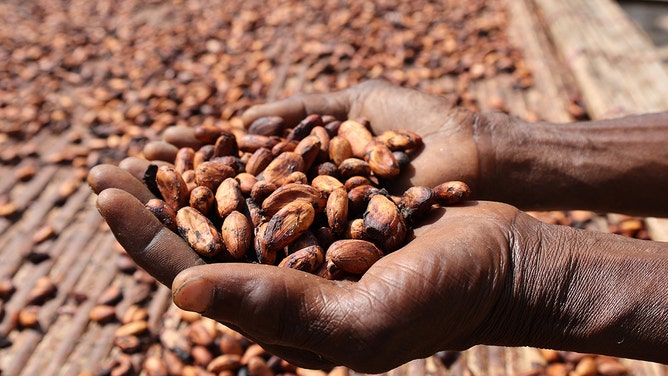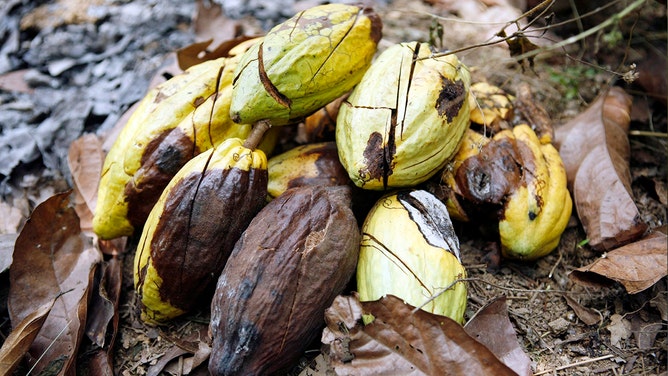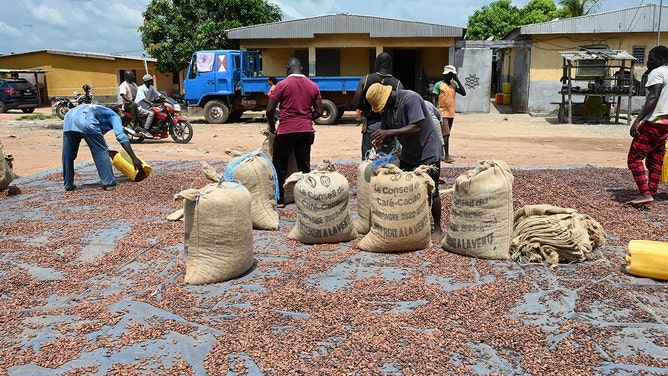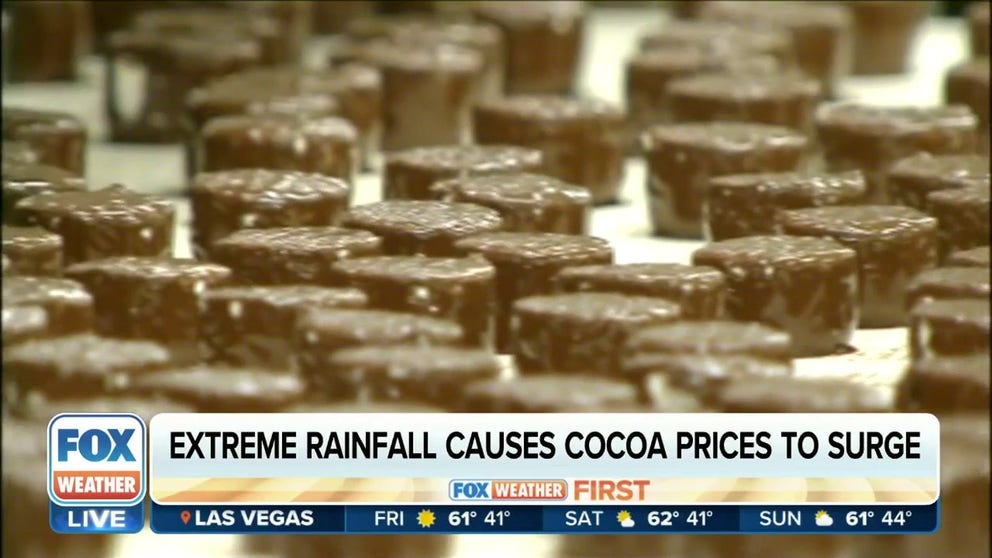Cocoa prices surge to 44-year high as extreme rainfall devastates crop in West Africa
Spoiler alert: Be prepared to pay more for the ingredients to make your brownies and Yule Logs treats this year.
Extreme rainfall causes cocoa prices to surge
During the past three to six months, the cocoa-producing West African region has experienced extreme rainfall, which poses a significant risk of crop losses, according to Everstream Analytics, a global company that provides supply chain insights and risk analytics.
As if a sugar shortage wasn't enough, now a cocoa shortage will surely put a damper on your holiday spirits as cocoa futures reach a high not seen in more than four decades.
During the past three to six months, the cocoa-producing West African region has experienced extreme rainfall, which poses a significant risk of crop losses, according to Everstream Analytics, a global company that provides supply chain insights and risk analytics.
"The main cocoa producers of West Africa include Côte d'Ivoire, Ghana, Nigeria, and Cameroon, and together account for around 70% of the world's supply," said Jon Davis, chief meteorologist for Everstream Analytics.
WILL EXTREME WEATHER AFFECT GIRL SCOUT COOKIE SEASON?

A Ghanaian farmer shows dried cocoa beans at a plantation in the East Region, Ghana, on Nov. 15, 2021.
(Xu Zheng/Xinhua / Getty Images)
Cocoa requires consistent rainfall with periods of intermittent sun exposure to thrive, Davis adds. However, the high volume and intensity of the rainfall have led to the widespread dropping of the flowers that turn into cocoa pods after 22 weeks.
The rain has also accelerated the spread of a fungal disease called black pod, which rots developed cocoa pods and destroyed a tenth of Ghana’s last cocoa harvest, according to Davis.
HOW THE YULE LOG TRADITION EVOLVED FROM AN ANCIENT VIKING RITUAL

A cocoa pod infested with "black pod," a fungus that develops due to too much rainfall, is discarded at a farm outside of Kumasi, Ghana, on Feb. 12, 2008.
(Jane Hahn/Bloomberg / Getty Images)
"To compound the weather impacts, high inflation in the region has created a cash crisis in which cocoa suppliers are unable to access affordable fertilizers and pesticides and cannot pay for laborers and farmers," Davis said.
Manufacturers of chocolate and confection products, reliant on cocoa inputs, have already begun raising consumer pricing due to the sourcing challenges, according to Davis.
West Africa's cocoa production threatened by poor growing conditions
West Africa experiences its primary cocoa growing season from March to October, followed by the harvest season from November to February.
"The recent growing season in the Ivory Coast, the largest producing country, was the wettest so far this century," Davis said. "The impressive rainfall amounts surpassed the levels observed in the second- and third-wettest seasons of the past two decades, which occurred in 2014 and 2010."
DO HOT DRINKS REALLY WARM YOU UP ON COLD DAYS? SORT OF

Workers collect dry cocoa beans in front of the store of a cocoa cooperative in the village of Hermankono on November 14, 2023.
(SIA KAMBOU/AFP / Getty Images)
The region experienced excessive precipitation, increasing the risk of mold and diseases and jeopardizing cocoa production quality and quantity, Davis warned.
Cocoa futures reach record high not seen since 1979
Cocoa production disruptions in the world's top-producing region have caused the third consecutive global cocoa deficit.
Prices have surged to a 46-year high, with cocoa futures in London hitting $3,919 per metric ton and in New York jumping 2.5% to $3,786 per metric ton. That is the highest for a contract since 1979, Davis noted.
"Due to general inflation trends, consumers in Europe and the U.S. have already seen price increases of 13% and 20%, respectively, for chocolate products over the last two years," he said. "While demand for chocolate has held strong in top chocolate-consuming countries amid the constant price increases of recent years, additional pressure from global sugar shortages has affected the industry this year."
THE DELICIOUSLY DIVINE HISTORY OF HOT CHOCOLATE

Richard Murphy looks through the glass at chocolates on Valentine's Day at the Belgian shop 'Leonidas' 14 February 2005 in Washington, DC.
(BRENDAN SMIALOWSKI/AFP / Getty Images)
According to Davis, manufacturers such as Hershey and Mondelez have already reported price increases at the consumer level for some of their products to offset the inflated costs of production.
"For both companies, price increases have been met with declines in chocolate sales volumes and growth forecasts," Davis said. "Even in Switzerland, the top country for chocolate consumption per capita, consumer purchasing has declined."
Davis added that the cocoa industry is expected to face challenges that could result in higher prices and more competition for consumer spending on private-label products.
